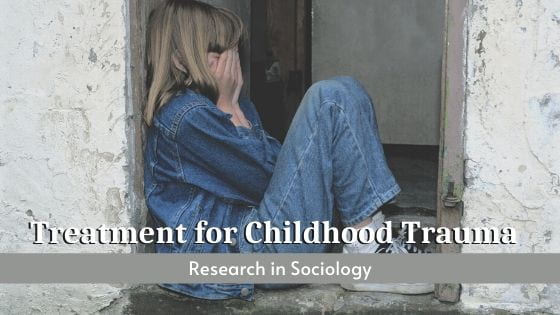 On the edge of a large city, in a small, working-class suburban neighborhood, a mother of four struggles to support her children on her own. She receives no child support; the father of her children isn’t involved after their divorce. To make matters worse, three of her four children faced deep trauma. The mother struggles to find affordable, accessible treatment for her children suffering from depression, suicidal ideation and attempts, drug abuse, debilitating health issues, a lack of thriving, and more.
On the edge of a large city, in a small, working-class suburban neighborhood, a mother of four struggles to support her children on her own. She receives no child support; the father of her children isn’t involved after their divorce. To make matters worse, three of her four children faced deep trauma. The mother struggles to find affordable, accessible treatment for her children suffering from depression, suicidal ideation and attempts, drug abuse, debilitating health issues, a lack of thriving, and more.
This situation is far too common. In fact, in 2018, there were about 678,000 victims of child abuse and neglect for many reasons, according to the Children’s Bureau, part of the U.S. Department of Health and Human Services that funds the National Child Abuse Prevention Month initiative this month. For this reason, researchers and policy advocates are working to identify and remove the barriers to quality care.
Dr. Toni Terling Watt, a professor in the Department of Sociology at Texas State University, has been focused on exactly this issue: childhood trauma and its treatment. She has been conducting research for over 20 years on child and adolescent health, foster care, mental health, and substance abuse. The theme of trauma runs through these research areas.
For example, in her research article, “Paradigm Shifts Don’t Come Easy: Confrontations between the Trauma Perspective and the DSM in Mental Health Treatment for Abused and Neglected Children,” published in the Journal of Child and Adolescent Trauma, Dr. Watt argues that we have the knowledge of trauma-informed approaches, but so far have lacked the will to change the system by enacting the necessary laws, policies, and programmatic practices to ensure appropriate treatment for those who’ve been impacted by childhood trauma.
The Issue of Childhood Trauma
Childhood trauma can result from physical and sexual abuse, witnessing domestic violence, or other intense events. Left untreated, trauma can manifest as psychological, physical, mental/emotional harm, and developmental delays. To successfully address these harms, therapists and care providers should use trauma-informed approaches. According to the Trauma Informed Care Project, a trauma-informed approach entails a “treatment framework that involves understanding, recognizing, and responding to the effects of all types of trauma. Trauma-informed care…helps survivors rebuild a sense of control and empowerment.”
The numbers of children who have experienced childhood trauma are alarming. The National Center for Mental Health Promotion and Youth Violence Prevention (2012) reported the following:
- 60% of adults report experiencing abuse or other difficult family circumstances during childhood.
- 26% of children in the United States will witness or experience a traumatic event before they turn four.
So, what happens when trauma is not effectively addressed?
According to the Substance Abuse and Mental Health Services Administration (SAMHSA) and the U.S. Department of Health and Human Services (DHHS), those who have experienced trauma are
- 15 times more likely to attempt suicide
- 4 times more likely to become an alcoholic
- 4 times more likely to develop a sexually transmitted disease
- 4 times more likely to inject drugs
- 3 times more likely to use antidepressant medication
- 3 times more likely to have serious job problems
These statistics do not include additional harmful effects caused by health conditions and diseases that result from unresolved trauma. They do not bring to light the total cost to society in lost productivity at work, the strain on relationships that can lead to broken families, the costs to the health care system to treat addictions, and so on.
Research: Towards a Solution

Dr. Watt set out to determine whether treatment services provided to these children were administered from the trauma perspective. If not, she wanted to understand and address ways to mitigate any systemic issues preventing best practices. The goal of her research was to “examine whether the standard system of care and/or the new integrated model of care [used to treat trauma-exposed children] are trauma-informed.”
For the study, data were collected on a total of 1,612 children over a period of 1½ years in order to review a behavioral health program serving children residing in a large urban area in the State’s care.
Results: The Obstacles are Systemic
Watt related that “[r]esults [of the study] reveal that trauma is not incorporated into behavioral health services in any formal or substantive way. In addition, data suggest that the Diagnostic and Statistical Manual of Mental Disorders (DSM) represents a significant barrier to the creation of trauma-informed systems. Data reveal how the DSM ignores, defeats, or co-opts the trauma perspective. These findings suggest that trauma-informed care is not easily added to the existing behavioral health system.”
This is not just the case for children in the State’s care – it’s the reality of the system.
Note: Published by the American Psychiatric Association, the Diagnostic and Statistical Manual of Mental Disorders (DSM) provides for the “standard classification of mental disorders used by mental health professionals in the United States.” It is used to categorize sets of symptoms in order to arrive at behavioral health diagnoses for the purpose of designing treatment protocols and to bill for services rendered.
A Response
Dr. Watt recommended the investigation of barriers to the effective treatment of trauma, especially for children in the State’s care. This group disproportionately experiences abuse and neglect, hence their removal from their homes and placement into State care.
Discussions around mental health have increasingly been centered on trauma-informed care as an innovative approach to resolving issues. Watt notes that the “push for trauma-informed care is part of a larger society-wide movement for systems to incorporate an understanding of how trauma relates to well-being.” She shares that the State of Texas has been engaged in aspects of the work to create a trauma-informed system, yet more needs to be done.
The study conducted by Watt revealed the primary barrier to effective care. She highlighted that the “common thread in the ideas that emerged is that a trauma perspective is incompatible with the philosophical underpinning of the current US mental health system, the Diagnostic and Statistical Manual of Mental Health Disorders (DSM).” In order to get paid for services, providers are forced to diagnose, to put a label on, children’s behavior that Watts and others have correctly cited as simply a normal response to traumatic events. This issue is the root of the problem; there exists no viable mechanism or incentive for providers to implement trauma-informed approaches into their practices if the system for reimbursement won’t cover these therapies.
Where does this leave moms seeking help for their children? What kind of society do we want to be–one that medicates away mental health issues, for the comfort of others, or one that seeks to deeply and substantially heal mental health conditions? The rate of childhood trauma in our society is too high. Many of us will be affected, directly and indirectly. We are all the mothers, siblings, friends, and colleagues of victims. We will encounter the aftermath of trauma if it is not resolved.
Certainly, the statistics should compel us to make this issue a priority. It’s one we can understand and work together to solve. Without awareness first, there can be no change.
